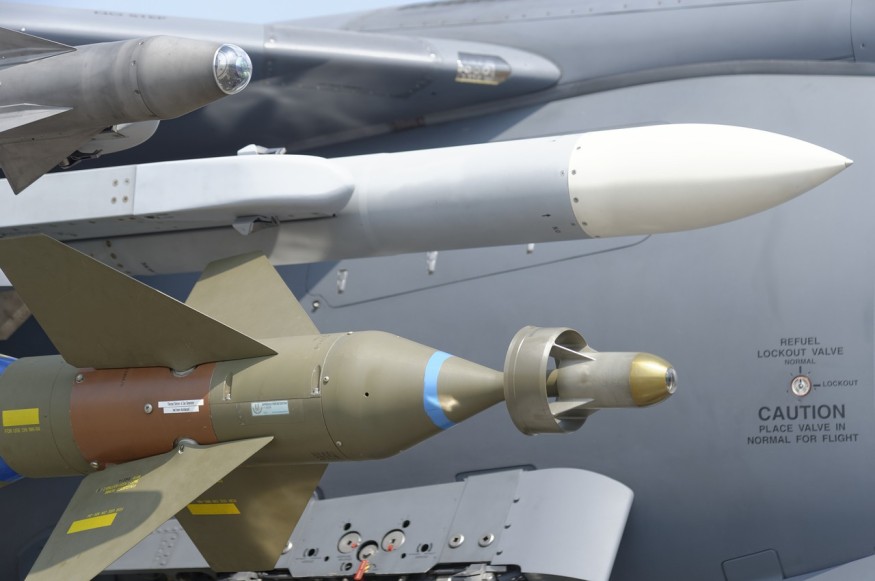On Monday, the US Air Force said that it had successfully tested a hypersonic missile that traveled at five times the speed of sound. On May 14, a test was conducted off the coast of Southern California.
The Western country made such a move after a Russian defense commander revived threats to wipe out Britain after establishing a new mutual security pact with Sweden and Finland.
According to official television Russia 1 (via Express), Aleksey Zhuravlyov stated it was perfectly fair for Russia to challenge Finland's existence.
He also stated that a Satmar nuclear missile, commonly known as "Satan II," could reach the UK roughly 200 seconds from Kaliningrad, a tiny Russian enclave in Europe.

US Air Force Tests Hypersonic Missile
Over the weekend, the US Air Force successfully tested its troublesome hypersonic missile one month after declaring that the program had been delayed due to "recent flight test abnormalities."
The Air Force said they officially launched the Air-launched Rapid Response Weapon from a B-52H bomber off the coast of Southern California on Saturday and reached hypersonic speeds without providing any other information about the test such as the duration or altitude.
"This was a major accomplishment by the ARRW team, for the weapon enterprise, and our Air Force," Brig. Gen. Heath Collins, the Air Force's program executive officer for weapons, told CNN.
The ARRW is a hypersonic weapon that employs a booster rocket to propel the missile over Mach 5, or five times the speed of sound. The booster is subsequently separated from the hypersonic glide vehicle, which glides at high speed toward its target.
Hypersonic Systems Defined
Hypersonic indicates a vehicle travels far faster than the speed of sound, which is 1,225 kilometers per hour at sea level and 1,067 kilometers per hour at 35,000 feet, where passenger jets fly. According to The Wire Science, hypersonic systems move at 5,633 km/h (approximately 1.6 km/s), whereas passenger aircraft fly at little under 966 kmph.
For decades, hypersonic systems have been in operation. John Glenn's capsule entered the atmosphere at hypersonic speed as he returned to Earth in 1962 after the first US crewed journey around the Earth. All intercontinental ballistic missiles in the world's nuclear arsenals are hypersonic, with top speeds of 24,140 km/h (6.4 km/s).
Large rockets launch intercontinental ballistic missiles (ICBMs), which fly on a predetermined trajectory that takes them out of the stratosphere, into space, and back into the atmosphere. Hypersonic missiles of the latest generation are highly rapid but not as quick as ICBMs. They're launched on smaller rockets to stay in the upper atmosphere.
Russia's Sarmat ICBM is about 116 feet long, weighs 220 tons, and can carry 15 light nuclear warheads simultaneously, configured as Several Independently Targetable Re-Entry Vehicles (MIRVs) which means a single rocket may attack multiple targets at once.
According to data from the US Center for Strategic and International Studies (via The Independent), the missile was developed as a successor to the original "Satan" ICBM, also known as the R-36 or Voevada, which dates from the Soviet era and could only carry 10 warheads and cover a range of 6,340 to 9,940 miles, compared to Satan-2's superior range of 6,200-11,180 miles.
Hypersonic missiles, such as the Kinzhal (Dagger) rockets reportedly deployed by the Russian Air Force, are regarded to be the next generation of weapons since they can travel at speeds up to 10 times the speed of sound or roughly 8,000mph.
Due to blast, heat, and radiation, nuclear explosions from these weapons might cause significant damage and casualties to everything. Science Times shares some advice on what to do in the event of a nuclear attack.
RELATED ARTICLE : What Are Hypersonic Missiles? Aerospace Engineer Explains Possible Threats, Unique Features Compared to Next-Gen Weapons
Check out more news and information on Missiles in Science Times.












